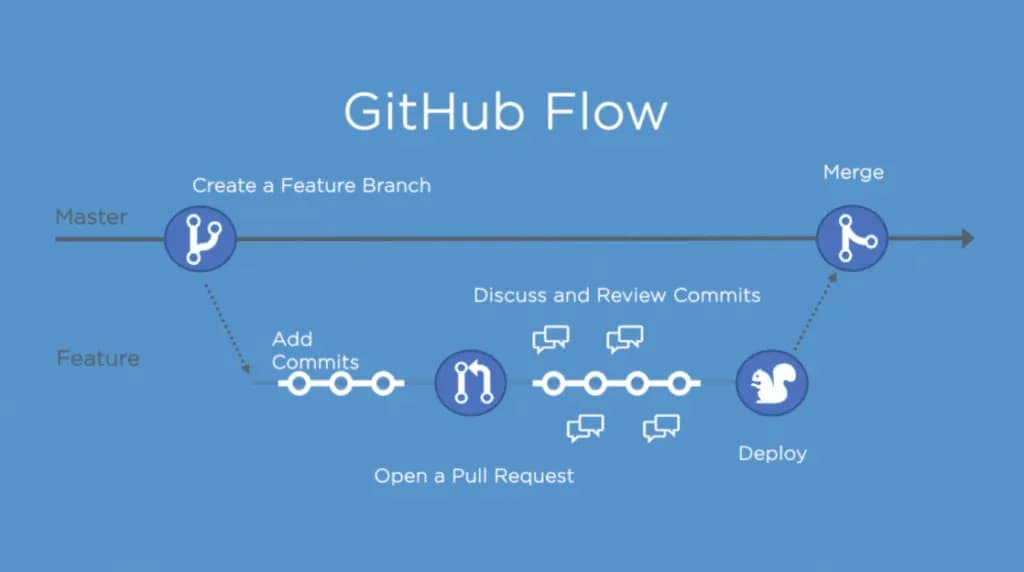Why a Scalable GitHub Workflow is Critical
As development teams expand, collaboration complexity multiplies:
-
More pull requests
-
Multiple branches
-
Concurrent releases
-
Diverse environments
A basic setup quickly falls apart under these pressures. A robust GitHub Workflow for growing teams solves this by integrating automation, best practices, and clear structure. The result? Fewer bugs, faster delivery, and happier teams.
Blackwhaledev has helped startups, scale-ups, and enterprises transition from chaotic repos to enterprise-grade workflows.
The Foundation of an Effective GitHub Workflow
Before implementing automation, you need a clearly defined base structure. A high-quality GitHub Workflow should include:
Branching Strategy
A Scalable GitHub approach starts with a well-thought-out branching model. Choose from:
-
Git Flow (feature → develop → release → main)
-
Trunk-Based Development (short-lived branches, fast merges)
-
GitHub Flow (ideal for continuous deployment)
At Blackwhaledev, we often recommend GitHub Flow for SaaS teams pushing multiple releases weekly.
Protected Branches
Enforce branch protection rules to prevent broken code from merging. A strong GitHub Workflow should:
-
Require PR reviews
-
Block direct pushes to main/master
-
Integrate status checks
Code Owners & Reviewers
Define ownership per directory in the repo. This ensures proper peer review—a key practice in a GitHub Workflow for growing teams.
Automating with GitHub Actions Workflow
GitHub Actions Workflow is a CI/CD powerhouse built directly into GitHub. It allows you to trigger jobs based on:
-
Commits and pull requests
-
Releases and tags
-
Scheduled times
-
External webhooks
Here’s how to structure a Scalable GitHub automation system.
Building Blocks of a GitHub Actions Workflow
Each workflow consists of:
-
Triggers:
on: push,on: pull_request, etc. -
Jobs: Logical units like
build,test,deploy -
Steps: Commands and actions inside each job
-
Runners: Machines (Linux/macOS/Windows) that execute jobs
Example YAML snippet:
name: CI Pipeline
on:
push:
branches: [main]
jobs:
test:
runs-on: ubuntu-latest
steps:
- uses: actions/checkout@v3
- name: Run Tests
run: npm test
This basic structure forms the base of a GitHub Workflow that scales as your team grows.
Modularizing the GitHub Actions Workflow
For maintainability and clarity, divide large workflows into smaller ones using workflow_call. This lets you:
-
Share logic across repos
-
Define reusable deployment jobs
-
Simplify code reviews
For instance, have separate .yml files for:
-
build.yml -
test.yml -
deploy.yml
This modular structure is key to a GitHub Workflow for growing teams.
Security in a Scalable GitHub System
Security should never be an afterthought. Here’s how Blackwhaledev integrates security into every layer of the GitHub Workflow:
-
Use GitHub Secrets to store API keys and tokens
-
Enable code scanning and dependency review via native GitHub tools
-
Enforce signed commits and branch protections
Deployment Automation with GitHub Actions Workflow
Deployments shouldn’t be manual. Use GitHub Actions Workflow to:
-
Trigger cloud deployment (AWS, Firebase, Azure)
-
Roll back on failure
-
Notify via Slack or Teams
-
Deploy via Docker or Kubernetes
Here’s a sample deployment job:
deploy:
needs: build
runs-on: ubuntu-latest
steps:
- uses: actions/checkout@v3
- name: Deploy to Firebase
run: firebase deploy --token ${{ secrets.FIREBASE_TOKEN }}
This structure is perfect for any GitHub Workflow for growing teams.
Monitoring and Logging for a GitHub Workflow
A scalable system isn’t just automated—it’s observable. Add:
-
Job summaries
-
Custom log outputs
-
Failure notifications
-
Audit logging for deployments
Blackwhaledev recommends integrating Grafana, Datadog, or GitHub Insights to monitor workflow performance.
Onboarding New Developers in a Scalable GitHub System
Your GitHub Workflow for growing teams should also support rapid onboarding:
-
Use template repositories with prebuilt workflows
-
Provide clear contribution guidelines
-
Automate repo permissions with GitHub Teams
This makes adding new developers seamless without compromising security or process integrity.
Real Example: Scaling with GitHub Workflow
A recent Blackwhaledev client went from 4 devs to 30 in under a year. Using a custom-built GitHub Workflow, we implemented:
-
Auto-tagging on merges to main
-
Multi-cloud deployment jobs
-
Nightly testing and code coverage reports
-
Slack alert integration for PR status
Their deployment frequency tripled, and bug resolution time dropped by 40%.
Third-Party Tools to Complement GitHub Actions Workflow
To get the most from your Scalable GitHub system, integrate these tools:
-
Snyk or Dependabot for security scans
-
Codecov for test coverage
-
Coveralls for detailed reporting
-
Terraform for infrastructure-as-code deployments
These fit seamlessly into a modern GitHub Workflow for growing teams.
Document Everything in Your GitHub Workflow
Include clear documentation alongside your workflows:
-
README.mdin.github/workflows/ -
Annotated
.ymlfiles -
Team-specific guides for code owners
At Blackwhaledev, we build internal developer portals to centralize all workflow-related knowledge.
Iterate and Optimize Your Scalable GitHub System
Set up monthly audits of your GitHub Actions Workflow. Check:
-
Step duration and failure rate
-
Action deprecations
-
Secrets management
-
Branch coverage
This ongoing review ensures your GitHub Workflow evolves as your team grows.
Final Checklist: Your GitHub Workflow for Growing Teams
-
✅ Well-defined branching strategy
-
✅ Automated CI/CD pipelines
-
✅ Secure credential handling
-
✅ Modular and reusable workflows
-
✅ Role-based permissions
-
✅ Integrated observability
-
✅ Comprehensive documentation
-
✅ Periodic optimization
Blackwhaledev ensures each of these pillars is in place when helping clients build scalable development ecosystems.
Conclusion: Empower Growth with a Scalable GitHub Workflow
In a fast-paced development environment, your workflows must grow with your team. A robust GitHub Workflow for growing teams is the backbone of modern development practices—ensuring speed, security, and scale.
Ready to future-proof your development lifecycle? Partner with Blackwhaledev and leverage our expertise in building scalable, automated, and secure GitHub Workflow systems using GitHub Actions Workflow.
